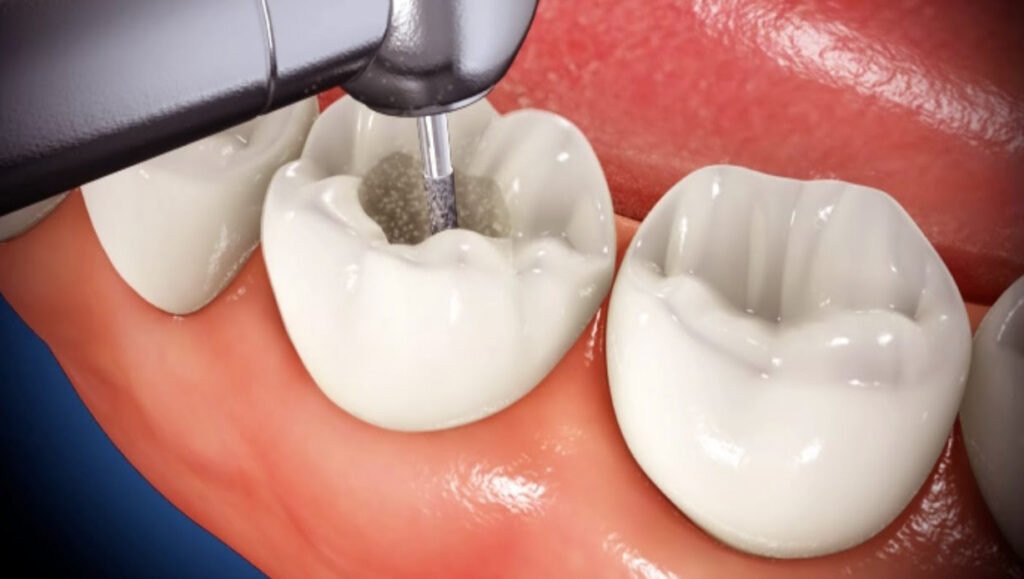A root canal is a dental operation to save a tooth that is badly decayed or diseased. Root canal therapy can repair and save your natural tooth, avoiding tooth extraction. The dentist removes the infected or swollen pulp during the root canal procedure.
The dentist then cleans and seals the damaged region. Because root canal therapy preserves the functionality of your natural teeth rather than offering you artificial dental substitutes, it is a widely requested surgery.
If you experience any of the following conditions, dentists may advise root canal therapy for you:
- Chipped or cracked teeth due to an injury or trauma.
- An oral bacterial infection.
- The inflamed pulp inside the root canal.
- Decayed tooth.
- Discolored tooth.
You may require root canal therapy if you experience persistent pain when chewing, severe sensitivity to hot or cold foods, or inflamed gum tissue. Consult your root canal dentist right away if you have any of these difficulties since untreated dental issues that go untreated for a long time can seriously harm your oral health.
Root Canal Symptoms:
Before receiving root canal therapy, patients present with a variety of symptoms.
The following are some of the most typical indications that you might require a root canal:
- Persistent tooth pain.
- Extreme sensitivity to heat and cold.
- Tooth discoloration or badly stained teeth.
- Tender or swollen gums.
- Severe pain sensations while chewing.
- A chipped or cracked tooth.
- Tooth mobility.
- Pimples on the gums.
- Decayed or darkened gums.
These are typical signs that you could require root canal therapy. Consult your root canal dentist near me as soon as you notice any of the symptoms above to stop the infection in your gums from spreading.
Root Canal Procedure in London, Ontario:
To complete the root canal surgery, you might need to see your endodontist more than once. The four phases of a root canal typically make up the procedure.
Injection Of Anesthesia
First, the endodontist uses drugs to numb the infected area or injects local anesthesia into the gums. Because of the anesthetic, patients are typically awake during this treatment but don’t feel any discomfort.
Removal Of The Pulp
After administering anesthesia, the endodontist makes a small incision on the tooth’s crown to reveal the affected pulp. The endodontist uses specialized dental instruments and files to extract the inflammatory pulp. The canals or passageways in your tooth may then be cleaned or sterilized.
Use Of Antibiotics
Endodontists apply antibiotics to the area after removing the pulp to slow the progression of infection or stop reinfection. After cleansing and cleaning the root canals, he cleans the tooth with gutta-percha. To lessen discomfort and control inflammation, the endodontist may occasionally advise patients to take some oral antibiotics.
Temporary Fillings
Finally, the endodontist completes this process by sealing the tooth opening with sealant, a soft temporary substance. Saliva cannot enter the root canals because of the sealant.
Cost of Root Canal:
The cost of a root canal varies from place to place and is also influenced by the patient’s oral health. However, the average cost of a root canal in London is between $300 and $1500. The price of a root canal varies depending on the kind of teeth.
For instance, the typical cost of a root canal for a front tooth is from $600 to $1100; for a premolar, the cost ranges from $700 to $1300; and for a molar, the typical cost of a root canal exceeds $1500. The most challenging and expensive technique is molar root canal therapy.
What Is The Extent Of Root Canal Pain?
Most of the time, numbing drugs are used during root canal treatments to ensure patients don’t experience pain. Although these are brief side effects and go away independently, some patients may have slight pain for a few days after treatment, a minor soreness in the afflicted area, or mild discomfort.
Patients should occasionally contact their dentist if the discomfort persists for over a few days or acquire medications or antibiotics. Following a root canal procedure, patients should maintain proper oral hygiene to prevent a re-infection.
Root Canal Before And After
Long-term untreated cavities in the mouth can lead to significant consequences and seriously impair your ability to chew. Treating bacterial infections and cavities at the earliest possible stage is essential to avoid severe dental treatments like tooth extraction. Endodontists prefer root canal therapy because it primarily restores your natural teeth; nothing fake can replace the originality.
Patients experience a considerable improvement in the functionality of their teeth after receiving root canal therapy since the severe and ongoing pain is eliminated. Since root canal therapy only affects natural teeth, patients can eat whatever they want afterward.
How Long Does A Root Canal Take?
Typically, patients see their endodontist more than twice while receiving root canal therapy. The dentist often removes the inflammatory or infected pulp during the initial appointment; at the follow-up appointment, he cleans the root canals, fills them with a temporary filling or crown, and finishes the surgery.
The length of this treatment is determined by how severe the infection is. Usually, this technique takes an hour to complete, but if numerous teeth are injured, it may take up to two hours. A root canal is an entirely non-invasive operation that enables patients to continue their regular lives without any restrictions or hindrances.


